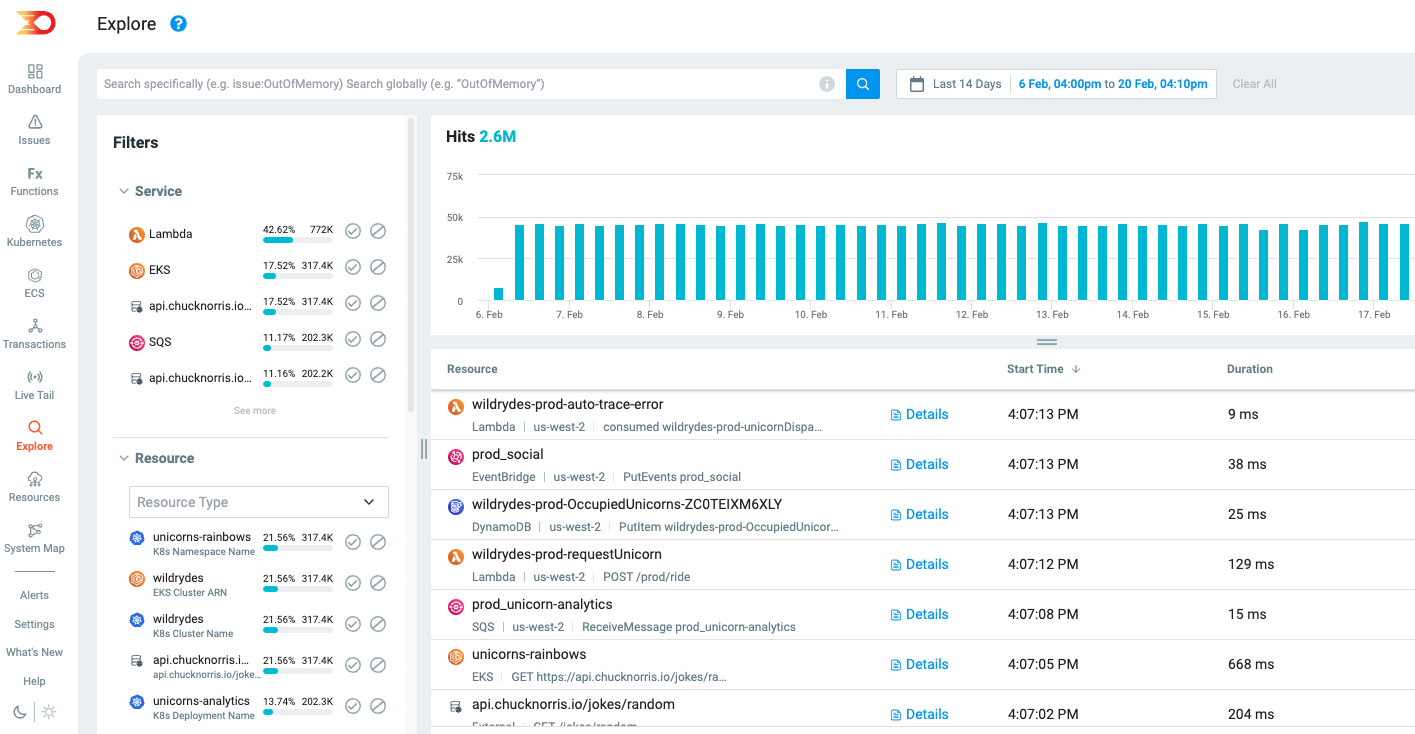Feb 22 2024

As devs, we know the age-old question of, “How long do you think it will take?” oh too well. Regardless of experience and position within the development cycle, this inquiry always comes loaded with expectations and complexities, a concept I refer to as Speed to Delivery Time (SDT). To be clear, SDT isn’t just about marking days on a calendar. Instead, it balances crafting a deliverable that meets the envisioned standards and doing so within a time frame that satisfies the stakeholders’ demands. This delicate balance is influenced by a myriad of factors, from the scope of the project and the team’s capabilities to unforeseen technical challenges and changes in market or user requirements.
Creating a new application is a process that requires you to think ahead and consider your future self, especially as the likely maintainer of the project beyond the delivery phase. While developing an app, things may sometimes go differently than planned, even if you start with a clear vision and good intentions, with specific goals and enthusiasm to guide you throughout the process. However, unexpected challenges and complexities often arise as the development progresses, putting even the most experienced in the ways of development to the test.
Developing an application is not just about overcoming technical difficulties; it’s also a constant evolution shaped by user needs and technological advancements. The pursuit of innovation must be balanced against the feasibility and cost of the project. As the development process continues, what started as a straightforward journey can quickly become a complex web of decisions, adjustments, and compromises. It highlights the importance of maintaining the project’s original objective while recognizing the app development landscape.
The Balancing Act
The allure of a swift delivery pace in application development is undeniable, with many often pursuing rapid deployment strategies to capture market opportunities, address user demands promptly, and look to reduce the cost of development at record speed. A classic example of this can be seen in the tech industry’s race to launch mobile applications. In their haste, some app deployments prioritized speed over thoroughness, resulting in applications that hit the market quickly but are plagued with usability issues, security vulnerabilities, or lack of key features. Such scenarios often lead to a tarnished reputation as users encountering these half-baked solutions turn to alternatives, leaving the hastily launched product to languish.
On the one hand, the benefits of quick deployment cannot be ignored. When done well, it allows for testing concepts in real-life situations and obtaining valuable user feedback for iterative improvement. This approach is often seen in the Minimum Viable Product (MVP) strategy, enabling agile adaptation to user preferences and market dynamics. For example, many successful startups have launched MVPs, iterating based on user feedback and refining their offerings without investing heavily in features that may not appeal to their target audience. However, it is important to note that this approach usually incurs the most technical debt, and its most common outcome is the need for a complete refactor.
Conversely, a more deliberate and measured approach to development prioritizes depth and quality, often embodying the adage “slow and steady wins the race.” This methodical pathway allows for comprehensive planning, extensive testing, and meticulous refinement, ensuring that the final product is functional but also robust and user-friendly. A pertinent example of this approach is the development of enterprise-level software solutions, where the complexity and scale of the projects necessitate a thorough development lifecycle to meet stringent quality and security standards. Such projects often involve numerous stakeholders and can span several months or even years, emphasizing the need for rigor and precision at every stage.
Nevertheless, this measured pace is not without its challenges, notably the specter of scope creep. As projects extend over longer periods, new technologies emerge, market conditions evolve, and user expectations shift, leading to a continuous expansion of project goals and features. This strains budgets and timelines and can dilute the original project vision, resulting in a bloated product that tries to be everything to everyone but loses its core value proposition. Effective management of scope creep is paramount, requiring clear communication, rigorous change control processes, and a focus on the project’s strategic objectives. Even with these measures, the crux of these complexities often lies in adept debugging and troubleshooting. The ability to efficiently identify and resolve issues becomes a core skill, ensuring that the project remains on track and adheres to its defined quality standards, whether the development pace is brisk or deliberate.
The Role of Observability in SDT
Central to managing SDT effectively is the application troubleshooting and debugging approach, especially in applications characterized by complex interactions or complex and distributed architectures. The complexity of these applications means that issues can be deeply interwoven and multifaceted, making them harder to diagnose and resolve. Without a strategic approach to observability, the ability to monitor and understand the application’s state through logging, tracing, and metrics can be fraught with danger. Often, this can lead to those involved in the development process finding themselves in a proverbial corner, needing help to progress due to unresolved issues or inefficient debugging processes that leave them wasting time chasing loose ends.
Observability provides a comprehensive view of an application’s internal state derived from its external outputs. In the context of SDT, effective observability strategies can significantly reduce the time spent identifying and resolving issues, optimizing the delivery timeline.
By implementing a robust observability framework, you can:
- Enhanced Issue Identification: OpenTelemetry’s comprehensive tracing capabilities allow teams to follow a request’s journey through the application, pinpointing where failures or slowdowns occur. This precise insight accelerates the identification of bugs or performance issues, cutting down the time from symptom to solution.
- Deeper Dependency Insights: Given the interconnected nature of modern applications, understanding how various services and components interact is crucial. OpenTelemetry provides this visibility, illuminating the complex web of interactions and dependencies, thereby simplifying identifying root causes in a sea of interconnected systems.
- Informed Decision-Making: With OpenTelemetry, decision-makers are equipped with real-time data and analytics, clearly showing application performance and user experience. This data-driven approach supports strategic decisions regarding feature development, resource allocation, and architectural adjustments, ensuring they are based on application performance and user needs.
- Cross-Stakeholder Clarity: OpenTelemetry democratizes access to telemetry data, ensuring that technical teams and business stakeholders understand application performance and its impact on user experience and business objectives. This shared understanding fosters collaboration and aligns efforts towards common goals.

The Cost of Implementing OpenTelemetry
At Lumigo, our commitment to 1-click OpenTelemetry is about aiding quicker implementation, especially in environments that traditionally demand a significant investment of time and resources for setup. This philosophy is instrumental in the context of serverless frameworks, Kubernetes, and Docker containers, where the complexity and dynamism of the infrastructure can make comprehensive monitoring a challenging endeavor. By simplifying the integration process, using Lumigo ensures that deployments can implement observability best practices without getting bogged down by technical complexities.
A prime example of a more straightforward implementation approach is Lumigo’s Kubernetes operator, designed to automatically instrument namespaces to bring OpenTelemetry to Kubernetes deployments. This operator is adept at detecting language-specific pod deployments, tailoring the instrumentation to the specific runtime of each detected deployment. This capability simplifies the initial setup and ensures that observability is deeply integrated into the fabric of Kubernetes, providing clear, actionable insights across the entire deployment landscape with minimal manual intervention. This approach ensures that those involved in the development process can focus on coding and spend less time building, deploying, and managing observability deployments.

Striking the Right Balance
Achieving the optimal SDT requires a delicate balance that accommodates the need for speed without compromising quality or scope.
This involves:
- Setting realistic timelines: Setting achievable deadlines for development, testing, and potential setbacks can help manage expectations and reduce the rush that leads to quality compromises.
- Embracing agile methodologies: Agile practices encourage iterative development, and continuous feedback, and adaptability, allowing teams to respond to changes without significant delays or scope creep.
- Prioritizing features: Focusing on core functionalities initially and gradually expanding the feature set can prevent scope creep while ensuring timely delivery.
- Implement an Observability: Utilizing Lumigo’s OpenTelemetry as part of a more comprehensive observability strategy enables swift integration of monitoring capabilities without sacrificing deployment timelines.
Speed to Delivery Time (SDT) should be a core factor in your application development, especially in the unified approach to troubleshooting and debugging to manage speed to development time on your project deliverables. Using Lumigo offers a perfect blend of speed and precision, ensuring that you can maintain the pace of development while ensuring quality. Sign up for Lumigo today to enhance your speed to deployment and ensure that your products meet and exceed user expectations without compromising on delivery timelines.

